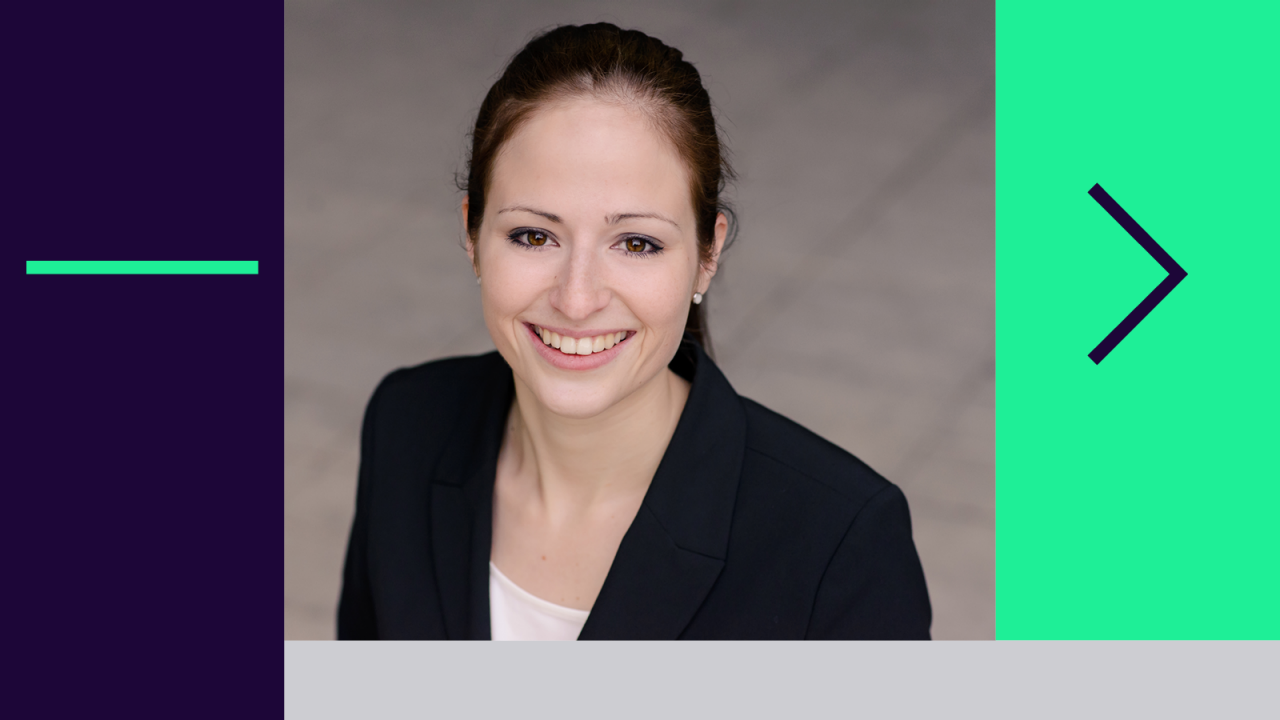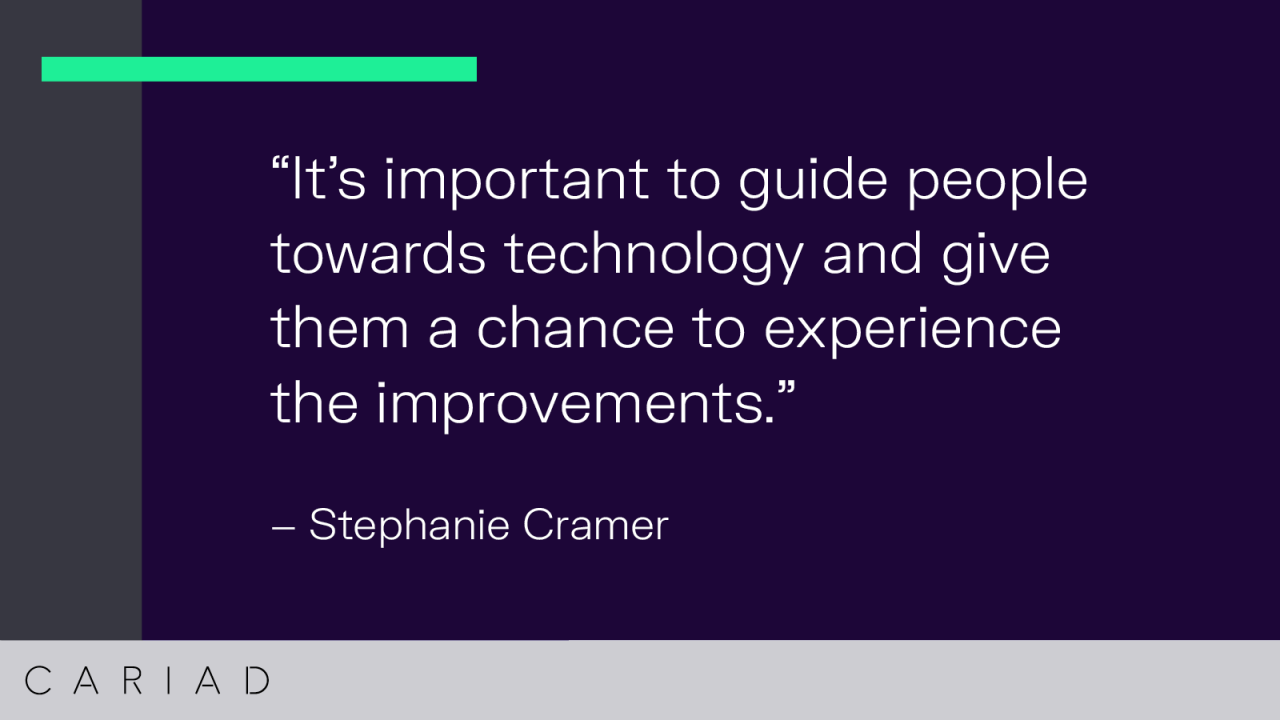“The customer needs to become an even stronger focus in the industry”
In our #CodeThatMovesTheWorld series, we’re talking to our digital minds at CARIAD to get an insight into their work, see what drives them and hear about their visions for future automotive mobility. This week, we’re talking to Stephanie Cramer, Function Owner Partial Driving Automation.
 Copyright by Lichtmädchen Fotografie - Nicki Schäfer
Copyright by Lichtmädchen Fotografie - Nicki Schäfer
Stephanie studied mechanical engineering at the Technical University of Munich, but it wasn’t until an internship at BMW in four-wheel drive development that the topic of vehicle function development came into the picture. She was given the chance to travel to Sweden to develop and implement code into a car, sparking an interest in vehicle technology.
Stephanie later went on to study more on driver assistance systems, control engineering and robotics. She wrote her master’s thesis at Audi in pre-development, as well as a doctorate on active vehicle pitch and roll motions during automated driving. And ever since then, she’s published many academic papers.
After a total of seven years in pre-development technology at Audi, Stephanie took the leap into series development at CARIAD.
Hi Stephanie, you’ve been working at CARIAD for a few months now. Could you tell us a bit more about your role and responsibilities in the team?
I joined CARIAD in December as a Function Owner. From the start, there was a lot to do, but the team was great at getting me on board.
In my role, I have a lot of contact with the Product Owners of our automated driving function. Every week, I sit down with them and we take a look at customer features that our function as a whole will be able to support. We ask ourselves how the challenges around them can be solved and which approaches to take from a technical perspective. Then we take that information to the team. I act as a coordinator, prioritizing tasks and deciding where they need to go. I enjoy being able to dip into each department like that.
I’m in charge of a partially automated driving function that supports the driver in various situations, so I need to determine the characteristics of that function. Imagine, for example, the car needs to automatically stop at a stop sign. One important part of that is the car’s ability to recognize the stop sign. Someone like Moritz, who you spoke to a few weeks ago, would take care of that task, since his department works on environmental perception. They’re deep in the code and can think about algorithms, but I have the overall function in sight.
So, how does series development compare with your earlier work in pre-development? Could you tell us a bit more about the differences between the two?
When I worked in pre-development at Audi, I worked with automated driving with a focus on the ‘feeling’ of driving for higher automated driving levels. There, you don’t have such a direct interaction with the customer. You still have to make them feel comfortable and guide them, but in a more subconscious way and with a general sense of well-being.
Now, as I did during my doctorate, I work in the area of driver assistance systems, with level 2 automation. Level 2 has a completely different focus. The driver is always engaged and not just a spectator. They interact with the car and are still responsible for driving. You have to keep them happy and alert, so that they’re ready to overtake, if necessary. At the same time, it’s important to strike a balance so that you don’t annoy the driver with too many notifications. They simply need to know what their tasks are and how they can carry them out properly.

And what kind of characteristics do you need to succeed in a role like yours?
You need to be flexible and creative so we can develop solutions and take on new topics. Good communication and the ability to work well in a team are incredibly important, particularly at the moment.
In my department, we’re the generalists that hold everything together, so we need very structured and analytical people who have an interest in the topic of automated driving as a whole. You need to have a strong understanding of what is and isn’t technically possible. It’s an advantage if you have a background in robotics and control engineering, too.
You do also need stamina and the ability to take care of difficult tasks and push on. After all, automated driving is a very complicated topic and we’re developing solutions to go shortly into production. You need to be pragmatic and keep processes in mind, but after all that hard work, you get to put a brand-new and exciting function in the car!
What are the big challenges we need to overcome to develop those exciting functions and transform the automotive industry?
It’s extremely important that we as an industry focus on software. When you look at traditional product development cycles, decisions about hardware are made very early on, so that it fits the whole construction. But software is variable and can be changed right up to the last minute. The industry needs to make sure that it’s variable too. We need to become much more flexible and allow changes. That’s a huge learning process, but a necessary one so that we can concentrate our efforts on software.
I’d like us to move away from the idea that you launch a car, produce it for eight years and then replace it with the next project. And with no real changes in the car, either. When I think of my phone, I can’t imagine only receiving an update every two years.
Also, the customer is really important to me and, as we release more and more technology, that needs to become an even stronger focus in the industry. At CARIAD, we want to develop software, features and functions that are going to appeal to a whole range of customers, not just developers. It’s important to guide people towards technology and give them a chance to experience the improvements. We need to be capable of making updates so we can introduce new features and help the customer to use the technology and see its benefits.
Last week, we spoke to your colleague Toshika, Project Lead Machine Learning & AI. She wants to know: what do you find the most exciting part in the development phase of automated driving functions?
Having only recently changed my job, I would say that each phase of development is exciting in its own way. In predevelopment, I really enjoyed generating new ideas and concepts for future driving scenarios, most recently for traffic at roundabouts, and getting them running in a prototypical development environment within a pretty short time. Experiencing and testing the concepts and algorithms in real traffic was spooky at first but so much fun. With every test drive, new ideas came up and you could easily realize them afterwards. In series development, I have an exciting opportunity to actually launch a new automated driving function and therefore focus on the requirements, specifications, regulatory topics and processes needed to get such a function on the market.
Next time, we’ll be talking to Julia Altenbuchner, who works as a software architect for HD maps. If you could ask her any question about her work, what would it be?
How important is culture if we are to successfully transform mobility and the automotive industry?
We are CARIAD. We’re transforming automotive mobility. Let’s build the leading tech stack in the automotive industry together.



